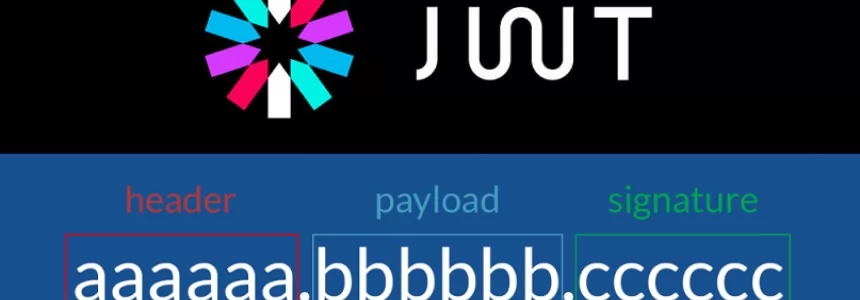
When social media is reigning over the world, no wonder photography is one of the crucial factors in today’s field of personal or professional recognition. Tons of applications. Still, the demand is far from ending. Online queries are swarming with searches for better graphics toolkit. The better the framework, the better the application on offering unique features for the users. These days, people are looking for versatility in GUI libraries as in the case of Java Swing.
Let’s see how the Java Swing is worthy in designing the photo editing app.
Benefits of using Java Swing to develop image-editing applications:
Swing is a GUI (Graphical User Interface) toolkit on the Java platform. This API (Application
Programming Interface) is used for building Java-based photo-editing or video-editing software.
In the modern world, photos are very essential data in the industrial environment, and hence they demand protection as in the form of applications like Visual Watermark for copyright infringement. Swing library has earned its fame among the developers for its platform-independent user-friendly interface required for high-end application-building without much effort.
Let’s follow how it works.
Platform Independence:
Swing is created entirely on Java, which means it is platform-independent. Because the source code of java can run in any operating system, unlike the platform-specific feature of C, C++. Therefore, any application designed by Swing can operate similarly in anywhere and any device. Hence, you don’t need to worry about building separate applications for different platform-based machines.
You can find the detail documentation of all Swing classes in Java API guides.
Hardware-acceleration:
The hardware-accelerated feature of Swing makes it possible for all the photos to be rendered directly on the GPU. The programmer doesn’t need to put extra effort into that. Also, this system enhances productivity, while reducing the required time-period for a process to complete. Therefore, you may put animations in full-screen applications or in case of a Full HD display of your app without worrying about any hiccup.
Although, if you want your app to run on a remote desktop for Parallels or VMware, you may consider SWT over Swing.
Lightweight
Swing components are lighter and richer than its predecessors. Therefore, you can build a lightweight user interface for your application.
The high-end flexibility of this toolkit permits its components to override the GUI controls of the native host OS so that it can reveal itself over that. Swing doesn’t call for the native UI toolkit, as it uses Java 2D APIs to perform the required alterations. That means, these components don’t tie-up with the corresponding GUI components of the specific OS of the device. That’s why they can freely render in all possible ways the graphics GUIs allow them for.
Though Swing was created to mitigate the difficulties with heavy-weight platform-based AWT, it still relies on an AWT container in its core. It can plug into the UI framework of the OS and open up the options for screen or device mapping including other interactions such as mouse movements or key-press.
Extensibility
The rich modular-based architecture of Swing provides the option for plugging to apply custom implementations for specified user interfaces. Therefore, you can offer your users to alter the default options in the application as per their requirements. The easy customization option reveals various visual appearances which are not dependent on any core representation.
The components of the Swing framework is extracted from javax.swing.JComponent class. Swing components obey the rules of the Java Beans Components.
Manageability
Java Swing follows the run-time mechanism and indirect pattern of compositions. That means you can change the core settings while running the program. Therefore, an application developed by Swing offers the same possibilities, and you can build an easily manageable software with simple configuration out of it. Such as, you don’t need to stop the program or reboot the machine every time to add or remove new components in the application.
Besides, Swing-based apps allow users to change the look and feel in the features without demanding any alteration in the basic code of the program.
MVC and Loose-coupling:
Swing library uses MVC or model-view-controller mechanism in software designing. The model represents the data associated with a component, the view option manages the visualization of the component and the controller directs the way of interaction of the component with the user.
In the Swing toolkit, the MVC option is specified for the Model-Delegate version. The look and feel (view and controller) in this model are arranged in the delegate system. That’s why it is possible here to alter the look and feel of a component without changing the basic use of that component in the program. And hence, any change in one component doesn’t hurt the others. This pattern is also called a loosely coupled mechanism as well.
The developers can select from a range of default implementations provided for all the concrete components, or they can build it themselves. The default ones are connected with their corresponding JComponent child class in the library, and so no custom implementation is required in these cases. If you are going to use some complex components like trees, tables, or lists, you may end up creating a custom implementation around the app-oriented data structure.
Better bug-resistance:
You don’t have to confront a lot of usual bugs you face in C++ based applications. The access violation risk is minimum. Though there always remains some of them like memory leaking.
Versatility:
You can go with NetBeans, Eclipse, or IntelliJ IDEA in this development environment. All these IDEs come with code formatting, refactoring, auto-complete, unit test support, and various libraries. Besides, there are different options for native objects, Web and string supports in various layout managers.
Better support:
The popularity of Swing makes it easier to overcome any problem you face while developing in this framework, as most of your queries are found to be answered in online forums.
Last Thoughts
Swing offers a quick and effortless way of building promising desktop applications. The built-in codes are the life-savor to various developers. Yet, some serious bugs can eat-up your energy and time in critical moments. We can only hope that Oracle developers will be more attentive to fix those drawbacks.
Computer photo created by pressfoto - www.freepik.com
Janeth Kent
Licenciada en Bellas Artes y programadora por pasión. Cuando tengo un rato retoco fotos, edito vídeos y diseño cosas. El resto del tiempo escribo en MA-NO WEB DESIGN AND DEVELOPMENT.
Related Posts
How to upload files to the server using JavaScript
In this tutorial we are going to see how you can upload files to a server using Node.js using JavaScript, which is very common. For example, you might want to…
How to combine multiple objects in JavaScript
In JavaScript you can merge multiple objects in a variety of ways. The most commonly used methods are the spread operator ... and the Object.assign() function. How to copy objects with…
The Payment Request API: Revolutionizing Online Payments (Part 2)
In the first part of this series, we explored the fundamentals of the Payment Request API and how it simplifies the payment experience. Now, let's delve deeper into advanced features…
The Payment Request API: Revolutionizing Online Payments (Part 1)
The Payment Request API has emerged as the new standard for online payments, transforming the way transactions are conducted on the internet. In this two-part series, we will delve into…
Let's create a Color Picker from scratch with HTML5 Canvas, Javascript and CSS3
HTML5 Canvas is a technology that allows developers to generate real-time graphics and animations using JavaScript. It provides a blank canvas on which graphical elements, such as lines, shapes, images…
How do you stop JavaScript execution for a while: sleep()
A sleep()function is a function that allows you to stop the execution of code for a certain amount of time. Using a function similar to this can be interesting for…
Mastering array sorting in JavaScript: a guide to the sort() function
In this article, I will explain the usage and potential of the sort() function in JavaScript. What does the sort() function do? The sort() function allows you to sort the elements of…
Infinite scrolling with native JavaScript using the Fetch API
I have long wanted to talk about how infinite scroll functionality can be implemented in a list of items that might be on any Web page. Infinite scroll is a technique…
Sorting elements with SortableJS and storing them in localStorage
SortableJS is a JavaScript extension that you will be able to use in your developments to offer your users the possibility to drag and drop elements in order to change…
What is a JWT token and how does it work?
JWT tokens are a standard used to create application access tokens, enabling user authentication in web applications. Specifically, it follows the RFC 7519 standard. What is a JWT token A JWT token…
Template Literals in JavaScript
Template literals, also known as template literals, appeared in JavaScript in its ES6 version, providing a new method of declaring strings using inverted quotes, offering several new and improved possibilities. About…
How to use the endsWith method in JavaScript
In this short tutorial, we are going to see what the endsWith method, introduced in JavaScript ES6, is and how it is used with strings in JavaScript. The endsWith method is…













